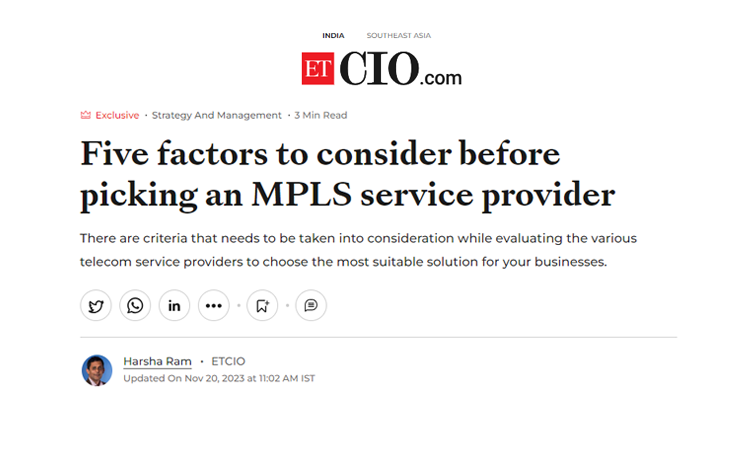Table of contents
In today’s hyper-connected and fast-paced global marketplace, connectivity is the lifeblood needed to keep businesses running smoothly. Enterprise, small or large, need reliable and fast communication networks to work and grow.
Organizations are given access to a communication network that is entirely dependable, quick, flexible, and cost effective due to MPLS and its “labelling protocol” Businesses are considering shifting to MPLS networks due to the clear advantages of MPLS connectivity, However, choosing an MPLS service provider can be time-consuming and complicated given the industry’s diverse offerings and management methods.
There are criteria that needs to be taken into consideration while evaluating the various telecom service providers to choose the most suitable solution for your businesses.
The first element that businesses need to check is the network coverage offered by the service provider. It is critical to confirm that the network carrier’s service area includes all your targeted locations, and if global connectivity is required, the network service can provide reliable international coverage. Therefore, latency, jitter, resilience, and cost of the MPLS network are all directly impacted by the service providers’ reach and coverage.
The second criteria is to consider the Network Project Management and Monitoring, because complex networks require constant management to run smoothly. Proactive management can result in reduced expense, fewer outages, and enhanced security. Therefore, the specifics of pricing and the range of services offered under the heading of network management and monitoring services must be understood by businesses.
In order to free up IT employees, it is also crucial to check whether the service provider monitors the entire network and provides managed services.
The third criteria to be mindful about while choosing an MPLS service provider is their Network Security. Security capabilities of the MPLS service provider need to be scrutinized closely. Businesses need to ensure that service providers can support and monitor the entire network closely and provide access to a dedicated security infrastructure, including experienced NOC engineers to ensure guaranteed uptime.
Another sure-fire way to assess the capabilities of the service provider is to check the SLAs (Service Level Agreements) offered. While experienced service providers with tested capabilities are usually willing to back their services with SLAs, it pays off to compare SLAs of several MPLS network providers. It is also helpful to look at their existing clients and check references to evaluate their performance.
Subsequent to comparing SLA’s, it is important for businesses to assess, evaluate and understand the Class of Service (CoSs) and Quality of Service (QoS) offered by the carrier. The Quality of Service (QoS) is impacted by the carrier’s consolidation and prioritisation decisions for different traffic categories. These standards must comply with the requirements of your business, and the contract with the service provider must specifically describe and list these service commitments.
While the mentioned points form a base to shortlist the right MPLS network provider, other factors such as routing protocols, staff expertise, 3rd party partnerships, network architecture and future scalability capabilities must also essentially be a part of the decision making process.
Despite the fact that cost is a major consideration in any business decision, your company’s long-term objectives and alignment with current and future needs should ultimately take precedence. After all, your MPLS Network will form the backbone of your business while looking at it from a wider perspective.































































